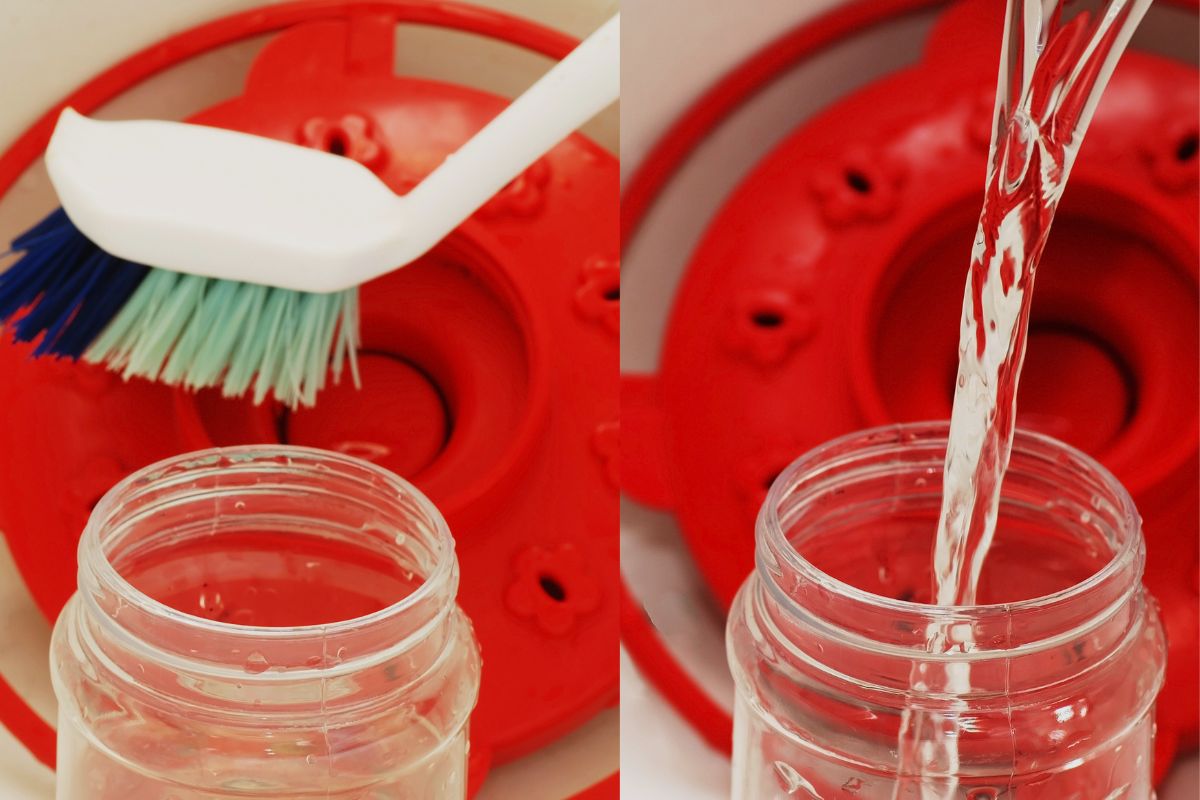Cleaning your hummingbird feeder is an important task that many bird enthusiasts tend to overlook. As a fellow bird lover, I understand the joy of watching these fascinating creatures in your yard. However, neglecting to clean their feeders regularly can pose serious health risks to the birds.
In this article, we will explore the question of how often to clean a hummingbird feeder. We will not only discuss the recommended cleaning frequency but also provide helpful tips and tricks for maintaining a safe and sanitary feeding environment that will attract these charming visitors.
Recommended Cleaning Frequency for Hummingbird Feeders
It is recommended to clean your hummingbird feeder at least once every three to five days. In hotter climates or during warmer months, it is advisable to clean the feeder every two days to prevent fermentation and bacterial growth. Regular cleaning ensures a safe and healthy environment for the hummingbirds to feed.
General Guidelines for Cleaning Hummingbird Feeders
To maintain a clean and welcoming environment for your winged visitors, follow these general guidelines for cleaning hummingbird feeders:
Frequency
Clean your hummingbird feeder at least once every three to four days, or more frequently during hot weather conditions. This prevents the growth of mold and harmful bacteria that can make hummingbirds sick.
Disassemble
Take apart the feeder to ensure you can thoroughly clean all the components. This is especially important for feeders with multiple feeding ports, as mold and debris can accumulate in small, hard-to-reach crevices.
Use Warm, Soapy Water
Prepare a solution of warm water mixed with mild dish soap. Avoid using harsh chemicals or bleach, as they can be harmful to hummingbirds. Soak the feeder components in the soapy water for a few minutes to loosen any stubborn debris.
Scrubbing
Use a soft brush or sponge to gently scrub the feeder components, paying close attention to feeding ports, perches, and reservoirs. You can also use a pipe cleaner or specialized hummingbird feeder cleaning brush to reach tight spots.
Rinse Thoroughly
Once you have removed all the grime, make sure to rinse the feeder components thoroughly with clean water to wash away any soap residue.
Dry Completely
Allow the feeder components to air dry before reassembling. A completely dry feeder will prevent the growth of mold and bacteria.
Refill with Fresh Nectar
Always use fresh nectar when refilling your feeder. Avoid topping off old nectar, as it can encourage bacterial growth and spoilage.
Helpful Tips for Cleaning Hummingbird Feeders
Here are some additional tips to help you maintain a clean and safe hummingbird feeder:
- Create a cleaning schedule to help you remember when it’s time to clean the feeder.
- Replace any damaged or worn-out components to ensure your feeder remains functional and safe for the birds.
- Consider using a nectar guard or ant moat to keep insects away from the feeder, ensuring a cleaner environment for the hummingbirds.
Maintenance Tricks for Hummingbird Feeders
To keep your feeder in optimal condition, follow these maintenance tricks:
- Regularly inspect your feeder for signs of wear or damage, and repair or replace parts as needed.
- Monitor the nectar level and quality, replacing it more frequently during hot weather or if it appears cloudy or discolored.
- Rotate multiple feeders in your yard, allowing you to clean and refill them without depriving the hummingbirds of a food source.
What to Avoid When Cleaning Hummingbird Feeders
When cleaning your hummingbird feeder, avoid the following practices that can be detrimental to the feeder’s condition or the health of the hummingbirds:
Using harsh chemicals
Refrain from using bleach, ammonia, or other harsh chemicals, as they can leave harmful residues that can endanger the hummingbirds. Stick to mild dish soap and warm water for cleaning.
Ignoring small parts
Don’t overlook small components like feeding ports and perches. Make sure to thoroughly clean these parts, as they are common areas for mold and bacteria to grow.
Incomplete rinsing
Ensure that you thoroughly rinse all feeder components after cleaning to remove any soap residue. Incomplete rinsing can contaminate the nectar and be harmful to the birds.
Reusing old nectar
Avoid topping off old nectar when refilling the feeder. Always replace the nectar with a fresh batch to prevent spoilage and bacterial growth.
Not drying thoroughly
Make sure to let the feeder components air dry completely before reassembling. A damp environment can promote mold and bacteria growth, posing a risk to the hummingbirds.
Using abrasive cleaning tools
Avoid using abrasive scrubbers or brushes that can damage the feeder’s surface. Stick to soft brushes, sponges, or pipe cleaners for gentle cleaning.
Ignoring manufacturer’s instructions
Don’t overlook any specific cleaning instructions provided by the feeder’s manufacturer. These guidelines are designed to help you maintain the feeder in the best possible condition.
Conclusion
Cleaning your hummingbird feeder regularly is crucial for the well-being of these enchanting visitors. By following the recommended cleaning frequency and incorporating the tips and precautions discussed, you can ensure your feeder remains a clean and safe haven for the hummingbirds. Remember to observe the feeder for any signs of wear or damage and make necessary repairs or replacements. With proper maintenance, you can continue to enjoy the presence of these delightful creatures in your yard.
